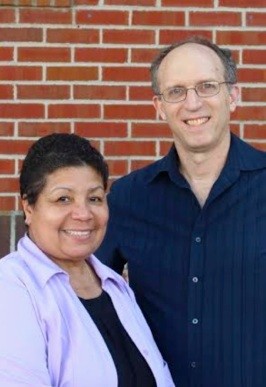In his 1867 doctoral dissertation, German mathematician Georg Cantor argued, “in mathematics, the art of posing a question must be held of higher value than solving it.” Many of Cantor’s contemporaries, mathematicians and religious leaders, did not agree.
Much of Cantor’s work, which founded set theory and the concept of transfinite numbers, involved asking questions—why is infinity mathematically unknowable? Is there a way to define infinity? What is a number really? What if infinite numbers do “exist” and can be expressed in a mathematical form?—questions that radically challenged long-held conceptions of what could and could not be understood through numbers and calculations. Cantor was roundly criticized for his work from many quarters throughout most of his life, perhaps none more vehemently than Leopold Kronecker, Cantor’s former college professor at the University of Berlin.
Today, Cantor’s work is widely respected, and more and more math educators recognize the central role curiosity plays in mathematics and are finding ways to deliberately teach students how to ask and use their own questions to learn math.
As we were researching and compiling resources to support math educators in tailoring the Question Formulation Technique (QFT) to their classrooms, we stumbled upon this exchange (below) between STEM teachers on a 2015 discussion board. One educator asks a question that we hear often at the Right Question Institute: “at the end of the day what types of math questions get answered and what math actually gets learned? Are [students]…able to generate questions about a specific area of math that actually allows the student to learn – math?”
What follows is a fascinating exchange between educators, wrestling with how best to apply and adapt the QFT to the unique demands of math instruction.
Hi All,
I am new to the group. I teach and facilitate discussion among mechanical engineers trying to use their math and engineering skills to help improve indoor air quality and human comfort in buildings. However, I am fascinated by this process and have used it now in two of my workshops very successfully on very broad problem statements. I am reading as many of the forum posts as possible to try and improve my QFT problem statement formulation skills to pose very specific problems to my engineers for them to use to generate questions around. I am not trying to play devil’s advocate here with this question – so I apologize in advance if that seems like what I am doing. Here is my question to you all. At the end of the day what types of math questions get answered and what math actually gets learned. Are you able to generate problems that generate questions about a specific area of math that actually allows the student to learn – math?
Again, apologize if this is a naive question.
I don’t think that the question is naive. I have used the QFocus in two ways that I think ultimately generated math learning. The first time I used it this year was in connection with a project to understand student attitudes toward homework. I told students that we were going to design a survey to give to students about their attitudes toward homework, and also to collect data on how much homework students actually had. My QFocus was “Homework is an important part of learning.”
After the questions were generated, students thought about questions they could ask and put together a survey. They then had to take a subset of the data and present a result of their choosing. They had to use some kind of graph (scatter plot, bar chart, etc.) and a narrative describing what they found. They also learned about how to ask questions in a survey, and what happens when questions are ambiguous. The got some experience analyzing their own and others’ data, and thinking critically about its accuracy and meaning.
When I used Dan Meyer’s “Ditch Diggers” three-act problem as a QFocus I was able to tell a lot about student learning. There were many ways of solving the problem and I could get some sense of student understanding by the level of sophistication of their approach. (Did they use systems of equations, slope, a table? How did they use this to answer the question?) In that case I thought that there were several solid lessons learned by the students in this project.
I am still confused. I do not see a concrete example of how this could be used for a very technical problem such as a specific math or science example. I could see where it may be useful if you had already taught a group of students the fundamentals of math – whatever they may be (adding, subtraction, multiplication, algebra, etc) and then pose a Qfocus and see what types of math the students determine is appropriate to use to solve the problem. For example the students may ask – How can I use math to estimate the number of pieces of candy in a large jar? What types of equations could be used to solve this problem? Etc, then do research on the specific math techniques and equations and learn to apply them. I haven’t seen those types of specific examples here – and the example above uses a Question to start the project off – not a Qfocus statement or challenge.
This is a rather long response. I hope that I understand your question, and that the response is helpful. But if it’s not, I don’t mind if you ask again or in a different way.
I use the technique in my 8th grade classroom. Certainly the level of problem is very different from the level of the students you teach, but I think that these may give you some ideas.
In the Ditch Digger’s problem, the Q-Focus was really the little movie that presented the situation. I supposed I could used statements like “find the math problem,” or “write a math problem for this situation” instead of a question “what is the math problem?” If you haven’t seen this problem (or any of Dan Meyer’s three-act problems, these pages are worth a visit:
http://www.livebinders.com/play/play_or_edit?id=330579 – (you’ll find a link to the ditch digger’s problem here; also look for pyramid of pennies)
http://blog.mrmeyer.com/category/3acts/ – (for the latest three-act problems)
The idea behind the three-act problems is that you see a math problem without any of the information necessary to solve it. The first thing students need to do is define the problem, estimate a solution, and then make a list of the specific information that would help them solve it. Then the teacher provides information as appropriate, and the students begin their work. It’s likely that when you see how these problems work you’ll get some ideas on how to use them in conjunction with a QFT.
Here is an example problem that you could use a QFT for:
First, assign this problem and ask students to solve it any way they can: What number leaves a remainder of 4 when divided by 7, 5 when divided by 8, and 6 when divided by 9?
At the 7/8 grade level, most students will use brute force to solve this.
Some may notice that the answer (501) is close to 504 = 7 * 8 * 9.
After students have solved this problem, the Q-Focus could be “questions that this problem brings to mind.” Some questions that might be;
Is there an easier way to solve the problem?
If I use numbers other than 7, 8 and 9, will the easy way work?
Is there anything special about the remainders (4, 5 and 6) in relation to 7, 8 and 9?
Can I find a method that works for any three numbers and any three remainders?
Students could use these questions for further study.
Another example:
I get certificates from Macy’s all the time. I often get a mailing that includes one card that offers 15% off on a purchase, another that offers 20% off on one item, and another that offers $25 on purchases over $100. Take a picture of those three as your Q-Focus. Students may ask:
- Which one should I use?
- Which one is the best deal?
- If I spent over $100, which certificate should I use?
- how do I figure out which certificate to use?
- Why is there a $100 minimum on the $25 certificate?
- Any of these questions could be turned into a mini-research project or a problem of the week.
Another example:
Take a picture of a high rise building or a brick-face apartment, or one of the pyramids in Egypt. Let that picture along with “write a math problem” be the Q-Focus. Students may generate questions such as
- how many bricks were used to build the building?
- how high is the building
- how wide is the building?
- how many windows are there?
- what is the surface area of the building?
- how much does the building weigh?
- what is the volume of the building?
- what is the capacity of the building (how many people could work there)?
- how many parking spaces will be needed?
- If I drop a penny from the top of the building, will it crack the sidewalk?
I know very little about your field, so my attempt at a relevant problem may be a bit lame, but it may also give you ideas:
Take a picture of an office, or office building, and state that the building manager has reported an air quality issue, and frame the issue to relate to the topic you want to introduce. I could imagine that students would have questions around
- what size is the building
- what kind of ventilation system is there
- what is the nature of the problem, etc.
- what tests will help verify the problem
- what are the design constraints
- how much money is reasonable to spend on the problem
I hope this helps.
You are spot on. This is the best, most concrete answer I’ve seen on how to use this technique. Your examples could apply to students of all ages – modified as appropriate for the age group of course. Thank you for taking the time to formulate your reply so well. A light came on for me. Asking the students to formulate questions for real world problems is the key. The fundamentals needed to actually solve the problems or questions they come up with can either be supplied or left up to them to find through research. Thank you again.
Want to see other ways the QFT can be used in math classrooms? Click here to download k-12 math classroom examples.




Speak Your Mind